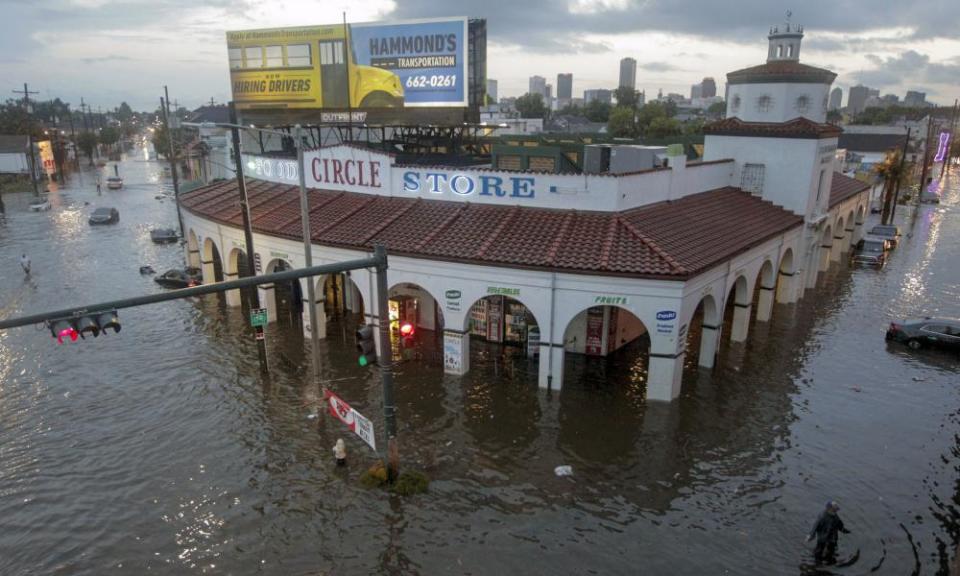New Orleans at risk of further floods after fire cuts power to pumps
Mitch Landrieu says: ‘We are at risk if we have a massive rain event’
Fire at power station on Thursday reduces city’s ability to drain stormwater

With heavy rains forecast for Thursday, New Orleans is in a “vulnerable position” following a fire at one of the power stations that runs the city’s flood-control water pumps, its mayor has said.
“We are at risk if we have a massive rain event,” Mitch Landrieu said at an emergency 3am press conference on Thursday.
New Orleans is still reeling from a day-long deluge on Saturday that caused flooding in several city neighborhoods, with waist-high accumulations on streets in Mid-City, Lakeview and elsewhere.
The fire at the power station early on Thursday further diminished the system’s capacity to drain stormwater, and a number of institutions, including most of the city’s schools, elected to close and brace for potentially crippling floods. Of the five turbine generators that power New Orleans’ water pumps, three were already down for maintenance, leaving the city with just one after the disruption.
“The power we have available to us now will not be enough to pump the city out in the time needed,” Landrieu said.
New Orleans, most of which lies several feet below sea level, relies on a complex but ageing and often unreliable system of pumps to remove rainwater from the streets – water that would otherwise fail to drain. The city also uses levies to cordon off the banks of the Mississippi river to the south and Lake Pontchartrain to the north. The system failed catastrophically during Hurricane Katrina in 2005, when 80% of New Orleans flooded and thousands of residents died.
On Saturday, more than 9in of rain fell on New Orleans, stranding pedestrians and leaving many cars disabled. Twelve hours after the rain had stopped, a number of neighborhoods remained flooded, and residents even in higher lying areas reported several feet of water – for some, the most since Katrina.
Fourteen of the city’s 121 pumps were down on Saturday, and on Tuesday, Cedric Grant, the city’s sewerage and water board, announced his retirement amid mounting criticism. When the city began to take on water, Grant’s staff had insisted that all pumps were working. Before Thursday’s fire, Landrieu asked for the resignations of additional drainage officials, calling the board’s “obfuscation” an “insult to the public.”
In the aftermath of the fire, the city can now only power 38 of the 58 pumps that drain the city’s east bank, Landrieu said. By comparison, 52 of those pumps were working on Saturday, when the city flooded. The reduced capacity puts the city in imminent threat of flooding on a scale not seen in 12 years.
Landreau said the city had an “army” of people working to restore the downed turbine, and was hopeful that it could be restored before the day is through.
But “I’ll believe it when I see it,” he added.

